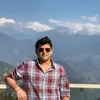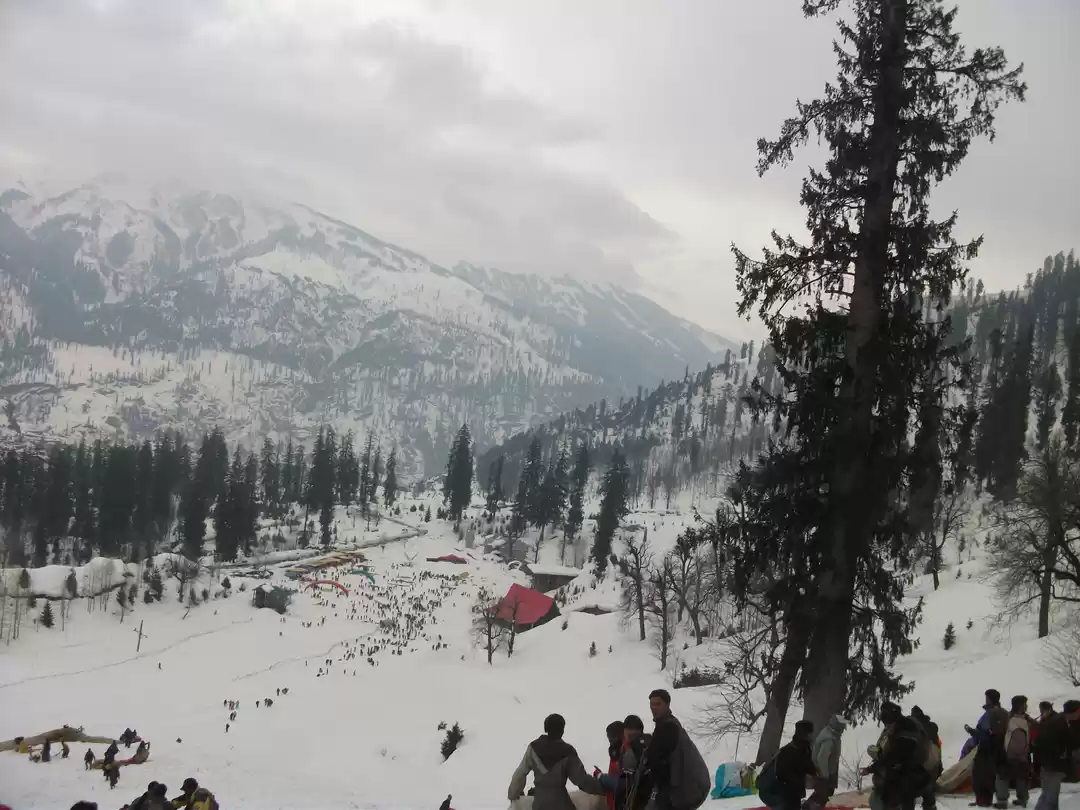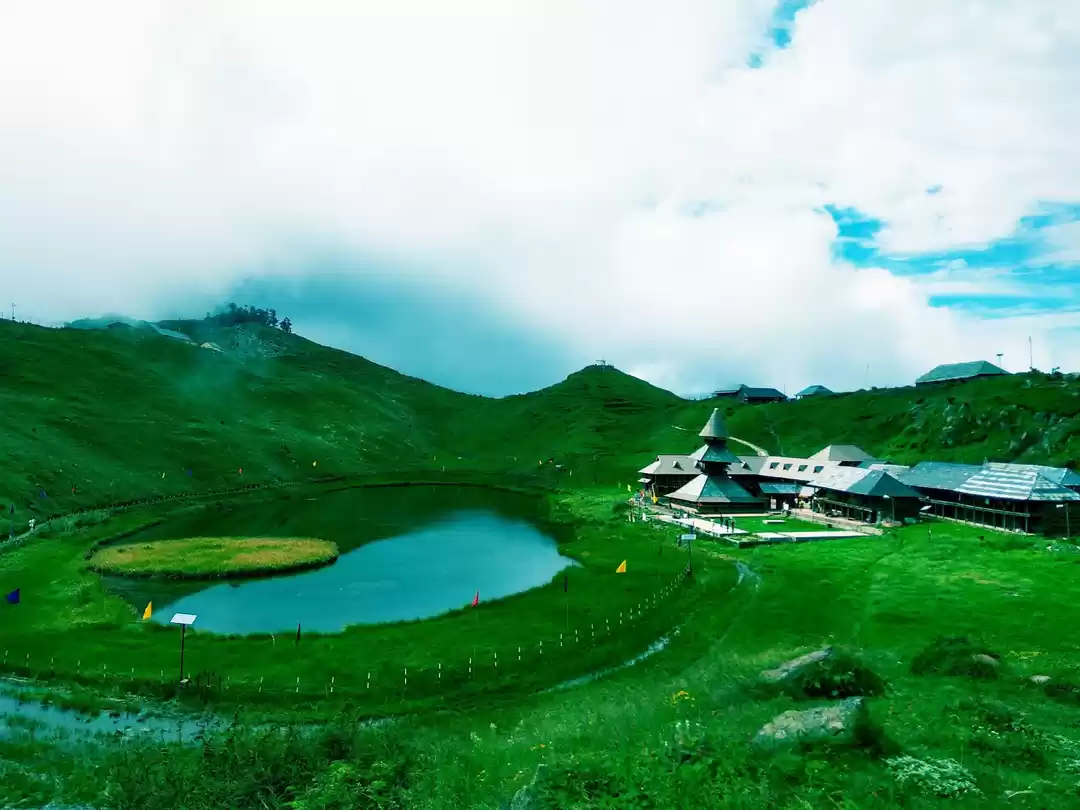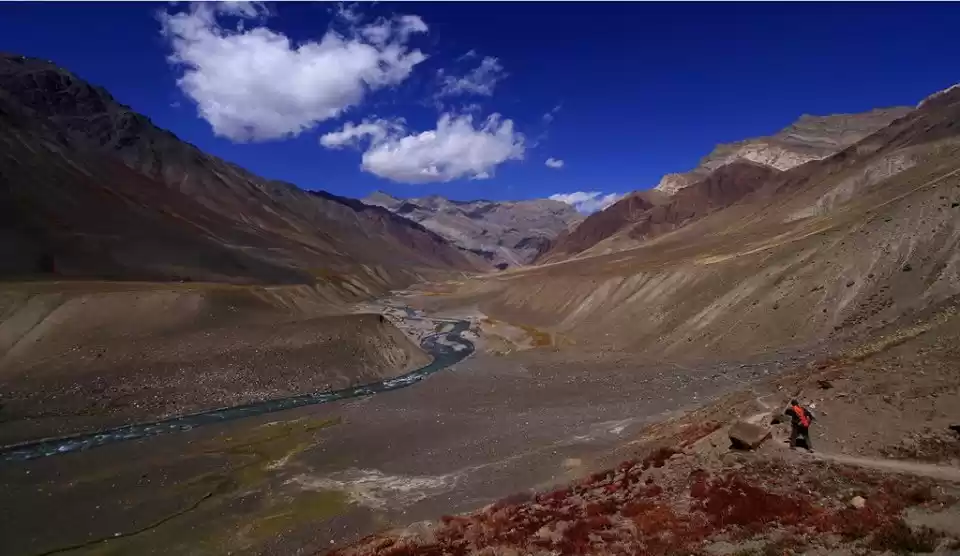Serolsar Lake is a pristine and serene lake nestled in the lap of the Himalayas. It is one of the most beautiful and peaceful places to visit in Himachal Pradesh, India. The trek to Serolsar Lake is a moderate and rewarding one, offering stunning views of the mountains, forests, and meadows. The lake is also home to a temple dedicated to the goddess Budhi Nagin, who is believed to reside in the lake. In this article, we will provide you with a complete guide to the Serolsar Lake Trek, covering everything you need to know, from how to reach, where to stay, what to pack, and what to expect. Whether you are a solo traveller, a couple, a family, or a group of friends, you will find this trek to be a memorable and enjoyable experience.
How to Reach Serolsar Lake
The base camp of the Serolsar Lake Trek is Jalori Pass, which is a high mountain pass located at an altitude of 3120 meters. Jalori Pass is accessible by road from different cities and towns in Himachal Pradesh, such as Shimla, Kullu, Manali, and Mandi. You can also reach Jalori Pass from Delhi, Chandigarh, or Amritsar by taking a bus or a train to Aut, and then hiring a taxi or a local bus to Banjar Valley. From Banjar Valley, you can either take another taxi or a bus to Jalori Pass, or trek for about 10 kilometers through the scenic villages of Shoja and Jibhi.
The road to Jalori Pass is narrow, steep, and winding, and can be challenging to drive on, especially during the monsoon and winter seasons. Therefore, it is advisable to hire a experienced driver or a local guide who knows the route well. Alternatively, you can also opt for a trekking package from a reputed trekking organization, who will arrange the transport, accommodation, food, and permits for you.

There are a few options for accommodation near Jalori Pass, such as guest houses, homestays, campsites, and hotels. You can choose the one that suits your budget and preference, and enjoy the hospitality and warmth of the local people. Some of the popular places to stay near Jalori Pass are Jalori Pass Camps, Jalori Heights, Jibhi Homestead, and Shoja Meadows. You can also find some eateries and dhabas near Jalori Pass, where you can taste the delicious local cuisine, such as siddu, madra, and thukpa.
Jalori Pass is not only the base camp of the Serolsar Lake Trek, but also a destination in itself. It offers panoramic views of the snow-capped peaks, such as Dhauladhar, Pir Panjal, and Kinnaur. You can also visit some nearby places of interest, such as Shoja, Jibhi, and Banjar Valley, which are known for their natural beauty, culture, and heritage. Shoja is a quaint village surrounded by dense forests and apple orchards. Jibhi is a charming hamlet with a gurgling stream and a waterfall. Banjar Valley is a lush green valley with a rich biodiversity and history.
Serolsar Lake Trek Details
The Serolsar Lake Trek is a moderate and rewarding trek, suitable for beginners as well as experienced trekkers. The trek starts from Jalori Pass, and follows a well-marked trail through the forest of oak, pine, and rhododendron. The trek is about 6 kilometers long, and takes about 2 to 3 hours to complete one way. The trek can be done in a day, or you can also camp near the lake for a night and return the next day.
The trek offers stunning views of the mountains, forests, and meadows, along the way. You will also encounter some clearings and huts, where you can rest and enjoy the scenery. The most challenging part of the trek is the steep ascent to the viewpoint, which is about 500 meters before the lake. From the viewpoint, you can get a 360-degree view of the Himalayan ranges, and also spot some birds and animals, such as eagles, vultures, and bears.

The lake is the main attraction and the highlight of the trek. It is a small and circular lake, with a diameter of about 100 meters. The lake is crystal clear and calm, reflecting the blue sky and the green trees. The lake is also home to a temple dedicated to the goddess Budhi Nagin, who is believed to reside in the lake. According to the legend, the goddess protects the lake and the surrounding area from any harm or pollution. The temple is a simple and white structure, with a red flag on the top. The temple is visited by many pilgrims and devotees, who offer prayers and flowers to the goddess.
The lake is a perfect place to relax and rejuvenate, after the trek. You can sit by the lake and admire the beauty and tranquility of the place. You can also take a dip in the lake, if you are brave enough to face the cold water. You can also explore the area around the lake, and discover some hidden gems, such as caves, springs, and flowers. You can also enjoy a picnic by the lake, and savor the fresh and organic food, such as fruits, nuts, and honey, that you can buy from the local vendors.
FAQs About Serolsar Lake Trek
There are some frequently asked questions about the Serolsar Lake Trek, that you might want to know before you plan your trip. Here are some of the answers to those questions:
Do I need a permit for the Serolsar Lake Trek?
No, you do not need a permit for the Serolsar Lake Trek, as it is located within the Great Himalayan National Park, which is a UNESCO World Heritage Site. However, you might need to pay a nominal entry fee at the park gate, which is about 50 rupees per person.
Where can I stay near the Serolsar Lake?
There are a few options for accommodation near the Serolsar Lake, such as guest houses, homestays, campsites, and hotels. You can choose the one that suits your budget and preference, and enjoy the hospitality and warmth of the local people. Some of the popular places to stay near the Serolsar Lake are Serolsar Lake Camps, Serolsar Lake Homestay, Serolsar Lake Guest House, and Serolsar Lake Hotel.
What are the food and water availability on the Serolsar Lake Trek?
There are some eateries and dhabas near Jalori Pass, where you can taste the delicious local cuisine, such as siddu, madra, and thukpa. You can also find some vendors near the lake, who sell fresh and organic food, such as fruits, nuts, and honey. However, it is advisable to carry your own packed lunch and snacks, as the availability and quality of the food might vary. You can also carry your own water bottles, or refill them from the natural springs along the way. However, make sure to purify the water before drinking, as it might be contaminated by the animals or the pilgrims.
What are the safety precautions on the Serolsar Lake Trek?
The Serolsar Lake Trek is a safe and easy trek, with a well-marked and maintained trail. However, there are some safety precautions that you should follow on the trek, such as:
- Check the weather forecast before you start the trek, and avoid the trek during the monsoon and winter seasons, as the trail might be slippery, muddy, or snowy.
- Wear comfortable and sturdy shoes, and carry a walking stick, to avoid slipping or falling on the trail.
- Carry warm and waterproof clothes, and a sleeping bag, if you plan to camp near the lake, as the temperature might drop at night.
- Carry a first-aid kit, and some basic medicines, such as painkillers, antiseptics, and bandages, in case of any injury or illness.
- Carry a flashlight, a whistle, and a compass, in case of any emergency or loss of direction.
- Do not litter or pollute the lake or the surrounding area, as it is a sacred and protected place. Respect the local culture and beliefs, and do not disturb the wildlife or the pilgrims.
- Inform your family or friends about your trek plan, and the expected time of return. Also, carry a mobile phone, and a power bank, and keep them charged, in case you need to contact them.
Serolsar Lake Trek Budget and Cost
The Serolsar Lake Trek is a budget-friendly and cost-effective trek, that can be done in a day or two, without spending much money. The trek can be done independently, or with a trekking package from a reputed trekking organization, who will arrange the transport, accommodation, food, and permits for you.

The cost of the trek will depend on various factors, such as the mode of transport, the type of accommodation, the season, and the duration of the trek. However, here is an approximate breakdown of the expenses that you can expect to incur on the trek:
Transport:
The transport cost will vary depending on the distance and the mode of transport that you choose to reach Jalori Pass. If you are travelling from Delhi, Chandigarh, or Amritsar, you can take a bus or a train to Aut, which will cost you about 500 to 1000 rupees per person. From Aut, you can hire a taxi or a local bus to Banjar Valley, which will cost you about 200 to 400 rupees per person. From Banjar Valley, you can either take another taxi or a bus to Jalori Pass, or trek for about 10 kilometers, which will cost you about 100 to 200 rupees per person.
Accommodation:
The accommodation cost will depend on the type and the quality of the accommodation that you choose to stay near Jalori Pass or Serolsar Lake. You can find some guest houses, homestays, campsites, and hotels near Jalori Pass, which will charge you about 500 to 1000 rupees per person per night, depending on the facilities and the season. You can also find some campsites near Serolsar Lake, which will charge you about 300 to 500 rupees per person per night, including the tent, the sleeping bag, and the food.
Food:
The food cost will depend on the type and the quantity of the food that you choose to eat on the trek. You can find some eateries and dhabas near Jalori Pass, where you can taste the delicious local cuisine, such as siddu, madra, and thukpa, which will cost you about 100 to 200 rupees per person per meal. You can also find some vendors near Serolsar Lake, who sell fresh and organic food, such as fruits, nuts, and honey, which will cost you about 50 to 100 rupees per person per meal. However, it is advisable to carry your own packed lunch and snacks, as the availability and quality of the food might vary. You can also carry your own water bottles, or refill them from the natural springs along the way.
Miscellaneous:
The miscellaneous cost will include the entry fee, the permit fee, the guide fee, and the tips that you might have to pay on the trek. The entry fee for the Great Himalayan National Park is about 50 rupees per person, and the permit fee for the Serolsar Lake Trek is about 100 rupees per person. The guide fee will depend on the experience and the service of the guide, and can range from 500 to 1000 rupees per day. The tips are optional, and depend on your satisfaction and generosity, and can range from 100 to 200 rupees per day.
The total cost of the Serolsar Lake Trek will vary depending on the factors mentioned above, but you can expect to spend about 3000 to 5000 rupees per person for a two-day trek, if you are travelling independently, and about 5000 to 7000 rupees per person for a two-day trek, if you are opting for a trekking package from Tripoto. Compared to other similar treks in Himachal Pradesh, such as Prashar Lake Trek, Kareri Lake Trek, or Bhrigu Lake Trek, the Serolsar Lake Trek is a cheaper and more value-for-money option, as it offers a similar level of difficulty, duration, distance, and scenery, but at a lower cost.
The Serolsar Lake Trek is a perfect choice for budget travellers, who want to experience the beauty and tranquility of the Himalayas, without burning a hole in their pocket.
Serolsar Lake Trek Tips and Tricks
The Serolsar Lake Trek is a enjoyable and memorable trek, that can be made even more fun and exciting with some tips and tricks. Here are some of the tips and tricks that you can follow on the trek, to make the most of your trip:

1. The best time to visit Serolsar Lake is from April to June, and from September to November, when the weather is pleasant and clear, and the lake is full and sparkling. Avoid the trek during the monsoon and winter seasons, as the trail might be slippery, muddy, or snowy, and the lake might be frozen or dry.
2. The best spots to take photos on the trek are the viewpoint, which offers a 360-degree view of the Himalayan ranges, and the lake, which offers a reflection of the sky and the trees. You can also take some candid shots of the wildlife, the pilgrims, and the locals, along the way.
3. The best food to try on the trek is the local cuisine, such as siddu, madra, and thukpa, which are made with fresh and organic ingredients, and have a unique and delicious taste. You can also try some fruits, nuts, and honey, that are grown and harvested by the local people, and have a natural and sweet flavor.
4. The best way to respect and appreciate the local culture and beliefs is to follow some simple rules and etiquette, such as:
- Do not litter or pollute the lake or the surrounding area, as it is a sacred and protected place. Carry your trash back with you, and dispose it properly.
- Do not disturb or harm the wildlife or the plants, as they are part of the natural balance and harmony of the place. Observe them from a safe distance, and do not feed or touch them.
- Do not enter or touch the temple, unless you are a devotee or a pilgrim, as it is a place of worship and reverence. If you want to visit the temple, ask for permission from the priest or the caretaker, and follow their instructions.
- Do not make noise or play music, as it might disturb the peace and tranquility of the place. Enjoy the silence and the sounds of nature, and respect the privacy and the sentiments of the other trekkers and the pilgrims.
- Do not take anything from the lake or the surrounding area, as it might be considered as theft or disrespect. Leave the place as you found it, or better.
The Serolsar Lake Trek is a perfect trek for anyone who wants to experience the beauty and tranquility of the Himalayas, without spending much time or money. The trek is a moderate and rewarding one, offering stunning views of the mountains, forests, and meadows. The lake is a pristine and serene place, where you can relax and rejuvenate, and also visit the temple of the goddess Budhi Nagin. The trek is also a great opportunity to learn and appreciate the local culture and beliefs, and interact with the local people and the pilgrims.
If you are looking for a comprehensive and engaging guide to the Serolsar Lake Trek, you can check out Tripoto, who offer the best trekking packages and services, at the best prices. Tripoto is a trusted and reputed trekking organization, who have expertise and experience in the field. Tripoto will arrange the transport, accommodation, food, and permits for you, and also provide you with a professional and friendly guide, who will ensure your safety and comfort on the trek. Tripoto will also provide you with some testimonials and reviews from previous trekkers, who have enjoyed and appreciated the trek.
So, what are you waiting for? Plan and book your Serolsar Lake Trek with Tripoto, and get ready for a memorable and enjoyable experience. You can visit their website, or contact them on their phone number or email address, to get more details and information about the trek.
Hurry up, and book your trek today, before the slots get filled up. Serolsar Lake awaits you!

















































